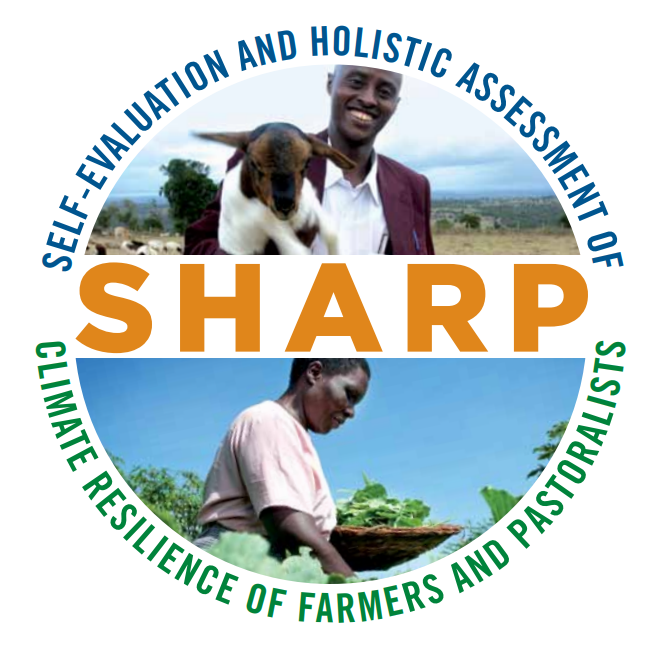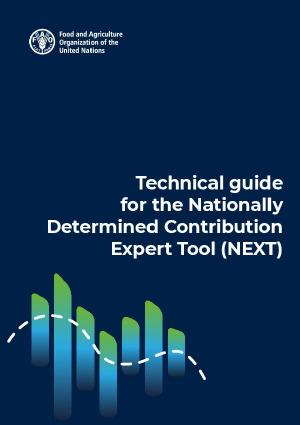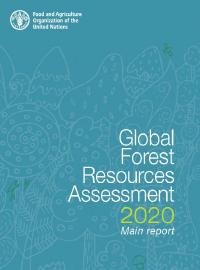Addressing climate change in agrifood systems
Tools
The NENA region faces numerous environmental challenges that have both immediate and long-term effects on food security and the sustainability of agricultural production as well as livelihoods. High demographic growth and the pressure to expand production have resulted in the excess use of chemical fertilizers and pesticides. There are two categories under tools: FAO climate change analysis, planning and reporting tools; and FAO Forest Monitoring Tools and Learning Materials.
FAO Climate Change Analysis, Planning and Reporting Tools

Climate Action Review Tool
The Climate Action Review (CAR) Tool helps countries decide on high-level climate priorities for the agriculture sector outlined in their nationally determined contributions (NDCs) and national adaptation plans (NAPs), assess their transformative potential, and develop long-lasting and targeted climate solutions through an inclusive approach.

Self-evaluation and Holistic Assessment of climate Resilience of farmers and Pastoralists (SHARP)
SHARP Tool supports projects in improving the resilience of farmers and herders as to safeguard their way of life, preserve their local indigenous knowledge and improve the livelihoods of their communities.

Climate change knowledge hub
The Climate Change Knowledge Hub is an online portal that gathers existing knowledge and resources on climate change in the agriculture and land use sectors to enhance countries' knowledge and capacity to deliver on their climate and sustainable development goals and achieve food security for all.

EX-Ante Carbon-balance Tool (EX-ACT)
The EX-Ante Carbon Balance Tool (EX-ACT) suite gathers the evidence complementing the information available to decisions makers on the outcomes of their agrifood interventions. It helps them to quantify the amount of greenhouse gas released or sequestered from agricultural production, analyze the outcomes of activities from agrifood investments along a selected agricultural value chains and assess the impact of agricultural activities on local biodiversity.

Global Livestock Environmental Assessment Model (GLEAM)
The Global Livestock Environmental Assessment Model is a GIS framework that simulates the bio-physical processes and activities along livestock supply chains under a life cycle assessment approach. The aim of GLEAM is to quantify production and use of natural resources in the livestock sector and to identify environmental impacts of livestock in order to contribute to the assessment of adaptation and mitigation scenarios to move towards a more sustainable livestock sector.

The Nationally Determined Contribution Expert Tool (NEXT)
The Nationally Determined Contribution Expert Tool (NEXT) is a greenhouse gas accounting tool developed by the FAO to support annual environmental impact assessment for the Agriculture, Forestry and Other Land Use sector. It provides a 30-year time series of annual and cumulated estimates of carbon removal and greenhouse gas emission reductions from actions determined by Parties in their climate policies.
The Nationally Determined Contributions Tracking Tool
The Nationally Determined Contributions (NDC) Tracking Tool user manual emphasizes the context behind developing the NDC Tracking Tool, its structure, methodological approach, and step-by-step guidance on how to install and use the tool. This FAO Nationally Determined Contributions Tracking Tool is an Excel-based, easy-to-use tool, which is designed to facilitate countries in collecting the information required to track progress made in implementing and achieving their NDCs.

Tool for Agroecology Performance Evaluation (TAPE)
TAPE is an innovative framework for consolidating global evidence on how agroecology supports the transformation to more sustainable agricultural and food systems. TAPE can be used to assess all types of production systems and agricultural sub-sectors: crop and livestock production, aquaculture, fisheries, and forestry. The tool is adaptable to local contexts and languages and is flexible enough to be complemented with any other methodology or indicators, in order to inform additional dimensions of sustainability not covered by the core criteria or to provide deeper analyses on a specific topic.
FAO Forest Monitoring Tools and Learning Materials

Global Forest Resources Assessment platform (FRA)
FAO has been monitoring the world’s forests at 5 to 10 year intervals since 1946. The Global Forest Resources Assessments (FRA) are now produced every five years in an attempt to provide a consistent approach to describing the world’s forests and how they are changing. The Assessment is based on two primary sources of data: Country Reports prepared by National Correspondents and remote sensing that is conducted by FAO together with national focal points and regional partners.

A fresh perspective- Global Forest Resources Assessment report 2020
This digital report contains the main findings of the Global Forest Resources Assessment 2020 (FRA 2020). FRA 2020 examines the status of, and trends in, more than 60 forest-related variables in 236 countries and territories in the period 1990–2020. The information provided by FRA presents a comprehensive view of the world’s forests and the ways in which the resource is changing. Such a clear global picture supports the development of sound policies, practices and investments affecting forests and forestry.
.jpg?sfvrsn=ec3d2e3b_1)
National Forest Monitoring System Assessment
FAO has been monitoring the world’s forests at 5 to 10 year intervals since 1946. The Global Forest Resources Assessments (FRA) are now produced every five years in an attempt to provide a consistent approach to describing the world’s forests and how they are changing. The Assessment is based on two primary sources of data: Country Reports prepared by National Correspondents and remote sensing that is conducted by FAO together with national focal points and regional partners.

National forest monitoring system assessment tool: Quick guidance
The national forest monitoring system (NFMS) assessment tool aims to assist countries in carrying out a comprehensive capacity assessment of forest monitoring across three complementary themes – institutional arrangements, measurement and estimation, and reporting and verification. The tool is based on FAO’s Voluntary Guidelines on National Forest Monitoring reinforced by the REDDcompass of the Global Forest Observations Initiative and incorporating FAO’s extensive field experience of forest monitoring in different national contexts.
